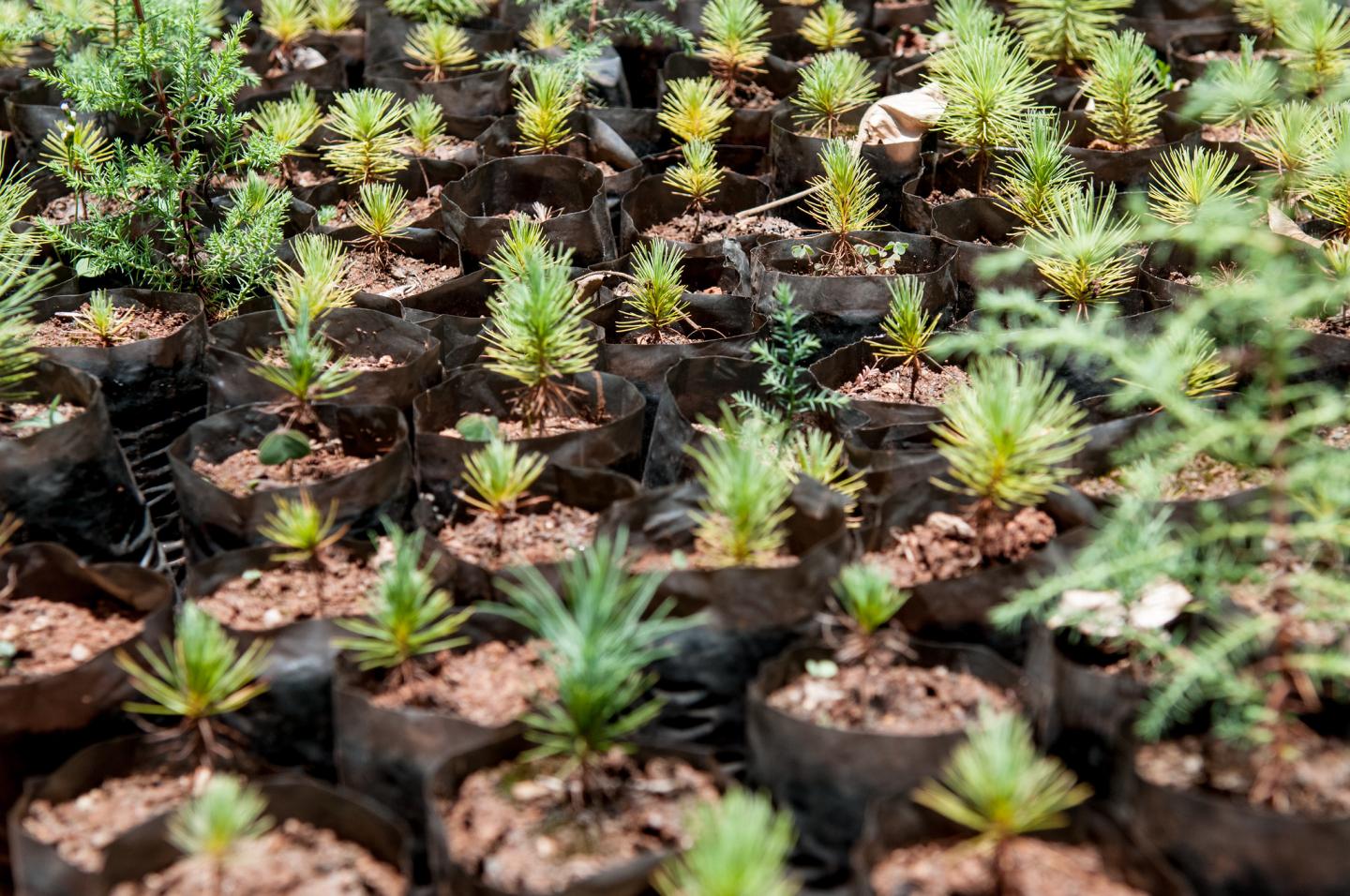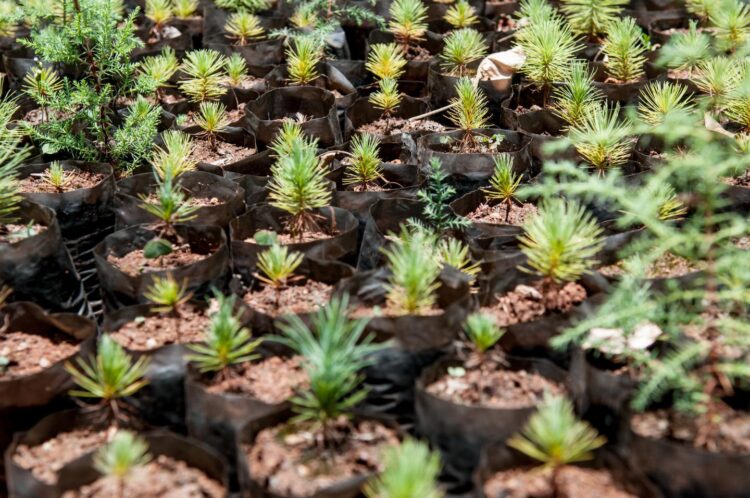Researchers investigating the economic costs of forest restoration find that more up-front investment in tree diversity leads to greater long-term benefits

Credit: Georgina Smith
Every year, 10 million hectares of forest are lost. Among efforts to revive degraded or deforested land is the Bonn Challenge, with a global goal to bring into restoration 350 million hectares by 2030. Yet such efforts neglect the nuanced but critical factor of bringing genetic diversity into restoration efforts for long-term success, which urgently needs to be addressed.
Integrating genetic diversity involves planting tree species with different genetic makeups and varied species adapted to local environments. If species are the same, they will not be able to reproduce or grow new seedlings. Christopher Kettle, an ecologist and geneticist at the Alliance of Bioversity International and the International Center for Tropical Agriculture (CIAT) explained:
“If 1,000 seeds are collected from two neighboring trees and planted in a nursery, those seeds would most likely be highly related. This would greatly reduce the probability that they would reproduce in a forest and produce new seeds. You’re basically setting your restoration project up to fail from the start. That’s one reason we need genetic diversity as a critical component of restoration projects.”
New research in Frontiers in Forests and Global Change shows that investing effort in ensuring genetically diverse seedlings actually has the potential to decrease overall restoration costs by up to 11%. While ambitious goals like the Bonn Challenge have resulted in growing political national and international restoration commitments, planting high-value, fast-growing trees, like teak or eucalyptus, in large numbers can actually lower genetic diversity and undermine restoration efforts.
“There are enormous risks for tropical forests with low genetic diversity,” said Kettle. “They will also have low capacity to adapt to the impacts of climate change; less resilience to new pests and pathogens. They will produce less seeds or fruit, with negative impacts on community livelihoods and income-generation. Investing in genetic diversity is the only sensible thing to do economically and ecologically, and it costs less in the long-run.”
Danny Nef, an expert researching climate change and socio-economic changes at the Alliance and ETH Zurich, said that investing in genetic diversity is critical despite higher initial costs. “It would result in one third higher seed collection costs, but expected ecological and socioeconomic long-term benefits would far outweigh additional costs. Even without any positive effects on post-maintenance costs, the total cost of the overall project would only increase by around 1%,” he said.
“Something that’s amazed me while working on this paper is that not a single study I have found has considered genetic diversity in the cost of restoration. The question is why not? It simply doesn’t make sense not to invest a little bit more at the start of restoration initiatives from a cost perspective, when you look at the bigger, holistic benefit.”
Agricultural economist Elisabetta Gotor added: “We economists tend to measure income-related expenses because they are easiest to assess. But I think it’s time for us to push ourselves, to tackle the resilience outcome generated by the conservation of genetics, looking at what materials are being used for example, for a more meaningful and accurate economic outcome from an environmental perspective.”
The global benefits of tropical forest restoration may be harder to measure but “the costs of planting seedlings are often felt at one end of the scale by farmers for example, while the overall benefits occurring from restoration in the long-run are at the global scale,” Gottor said. “This is why we have to connect the initial cost of investment in better quality seed, with the magnitude of broader benefits that don’t necessary have a market value.”
The researchers noted that while their evidence is based on a number of conservative assumptions and literature review, their findings show that long-term benefits associated with high genetic diversity are too low not to be considered and far outweigh costs. “This is an urgent call for restoration policies to integrate diversity at the species and genetic level into restoration planning and management,” they said.
“We do not consider efficiency in this context to be the planting of as many trees as possible per invested capital, but rather the long-term establishment of a tree population that serves the aim of restoration and thus ensures the sustainability of the invested capital,” they said, adding that building capacity among those responsible for implementing restoration efforts is also key to success.
###
Media Contact
Sean Mattson
[email protected]
Original Source
https:/
Related Journal Article
http://dx.





